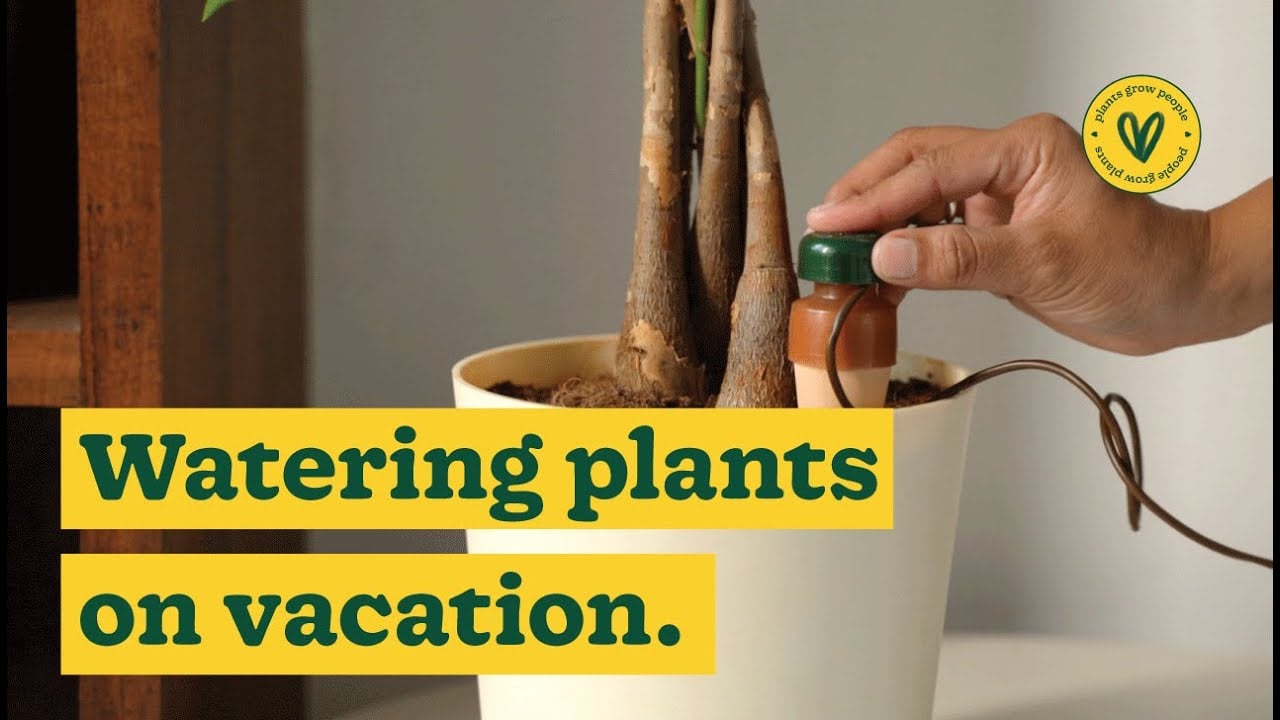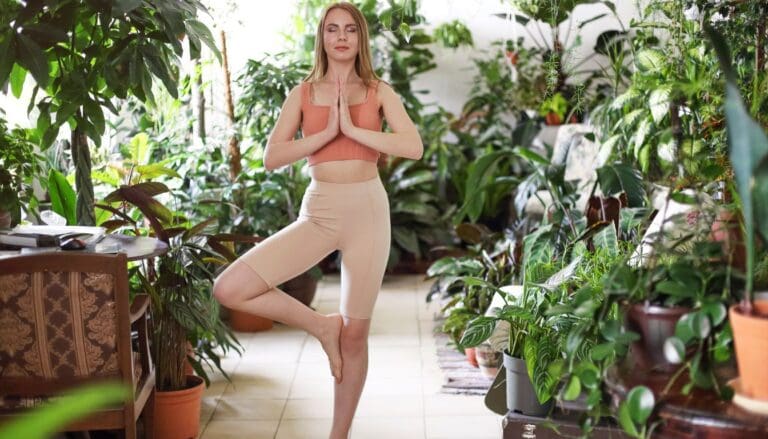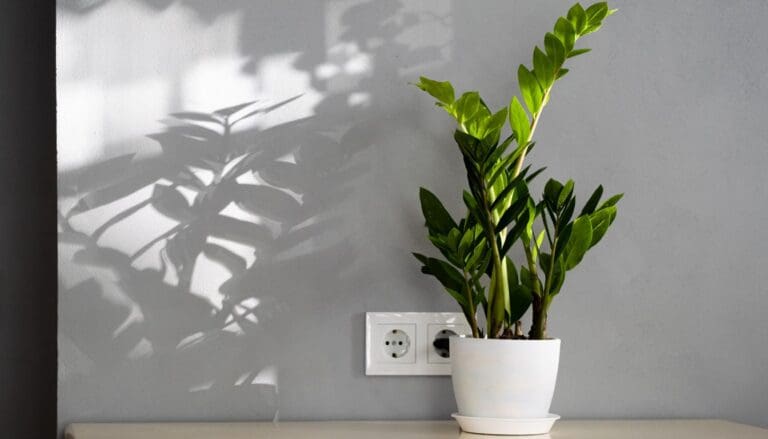10 Travel Prep Steps to Keep Plants Healthy While You’re Gone
Whenever I’m about to head out on a trip, I can’t help but worry about my plants. I want them to look just as good when I return as they did before I left.
By following a few simple steps, I’ve found my plants usually greet me with green leaves and sturdy stems, instead of sad, wilted ones.
Please note: Simplify Plants is reader-supported. As an Amazon Associate, I earn from qualifying purchases made by our readers with no extra cost added to you all! Some links in the post are affiliate links and I get a commission from purchases made through links in the post.
1) Water plants thoroughly a day before you leave

I always water my plants the day before I leave. It gives the soil a chance to really soak up moisture, which keeps the roots hydrated longer.
Room-temperature water is my go-to, since it won’t shock the plants. I pour slowly until water drains from the bottom—then I know the soil’s good and moist, but not soggy.
If a plant’s soil feels extra dry, I’ll poke my finger in to check how deep the water’s gone. Making sure the soil is damp (not soaked) seems to work best for me.
I avoid watering right before I walk out the door. Letting the plants absorb water for a day helps prevent root rot. That way, I know I did what I could before leaving.
2) Move sensitive plants away from direct sunlight
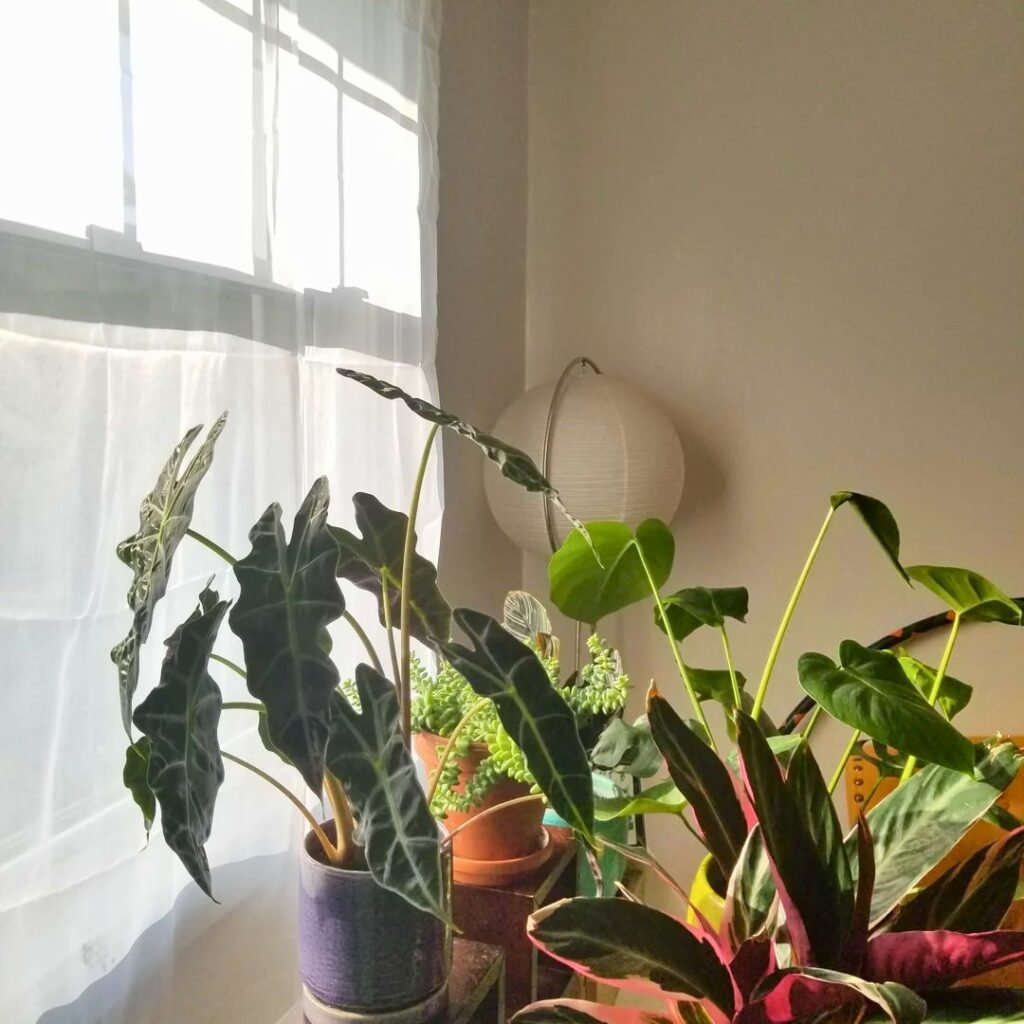
Before I leave, I always move my sensitive plants away from direct sunlight. Too much sun can dry out the soil and stress them while I’m gone.
Plants like ferns, orchids, or peace lilies do best in bright, indirect light. I look for a spot with filtered light—maybe near a north-facing window, or a few feet from any window that gets strong sun.
If I have blinds or sheer curtains, I’ll use them to soften the light even more. For plants that prefer lower light, I try to find a gentle, naturally lit spot.
This little move helps my plants save water and stay cooler. Protecting them from harsh sunlight definitely keeps them happier until I’m back.
3) Set up self-watering spikes
When I’m away, I use self-watering spikes to keep my plants hydrated. These things slowly deliver water over a few days, which is honestly a lifesaver.
Setting them up is easy—I fill a bottle, attach the spike, and stick it in the soil. The water drips out little by little, giving my plant steady moisture.
I push the spike in deep enough so it won’t tip over. For bigger plants, sometimes I’ll use two spikes.
I always test the spikes before I leave to see how fast they empty. That way, I know if I need a bigger bottle or an extra spike.
Self-watering spikes are best for houseplants and small to medium pots. For outdoor plants, I usually need something more heavy-duty.
Using these gives me peace of mind. It’s a cheap, low-fuss solution that keeps my plants from getting thirsty while I’m gone.
4) Use a humidity tray with pebbles and water
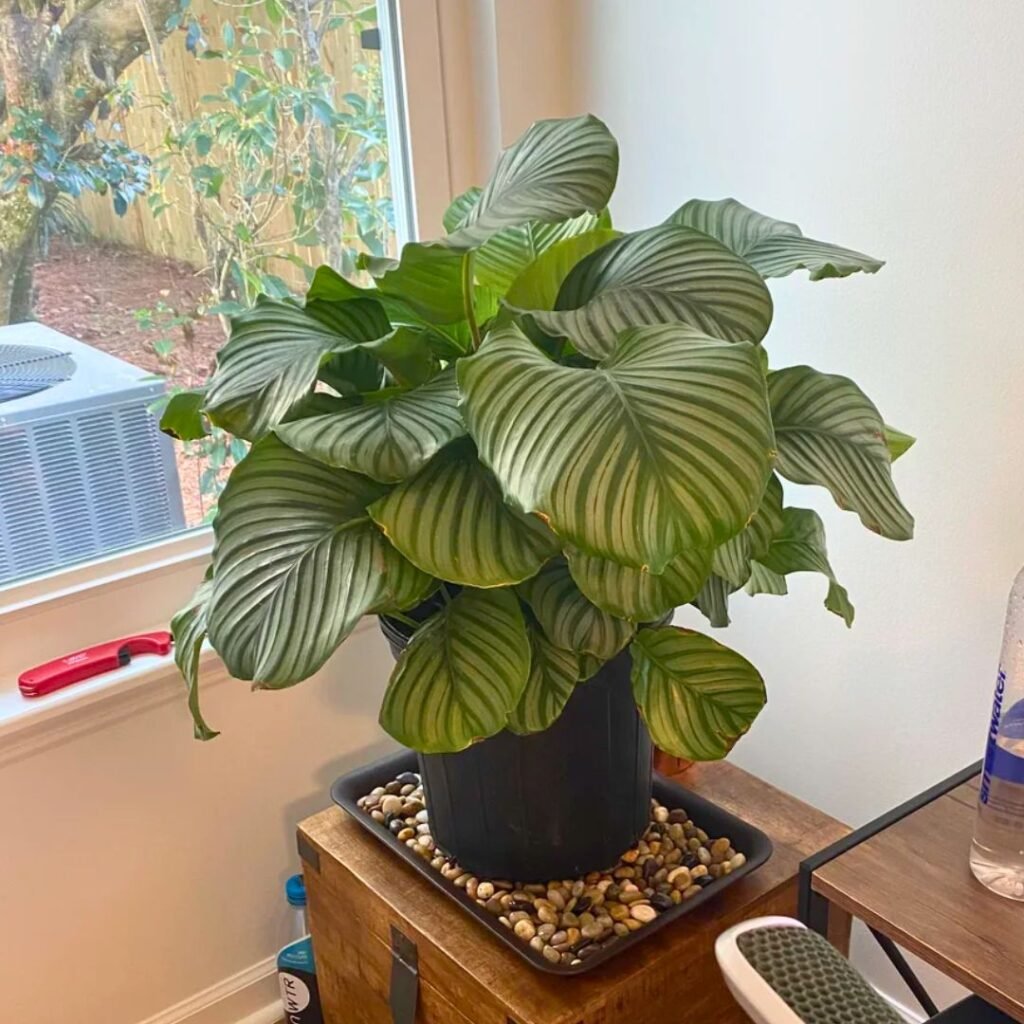
When I know I’ll be gone, I set up a humidity tray for my plants. It’s just a shallow dish with pebbles and a bit of water—the pot sits on the pebbles so the roots stay dry.
As the water evaporates, it boosts the air moisture around my plants. Lots of houseplants need that extra humidity, especially when I’m not there to mist them.
I grab a saucer or baking dish, toss in some pebbles, and pour in water until the pebbles are halfway covered. Then I set my plant pots on top.
This trick is a game-changer, especially for ferns or tropicals that love extra moisture. I’ve noticed fewer brown leaves when I use these trays.
If I’ll be away for a while, I make sure there’s enough water in the tray before I go. It’s a simple way to keep my plants happy till I’m back.
5) Group plants together to create a microclimate
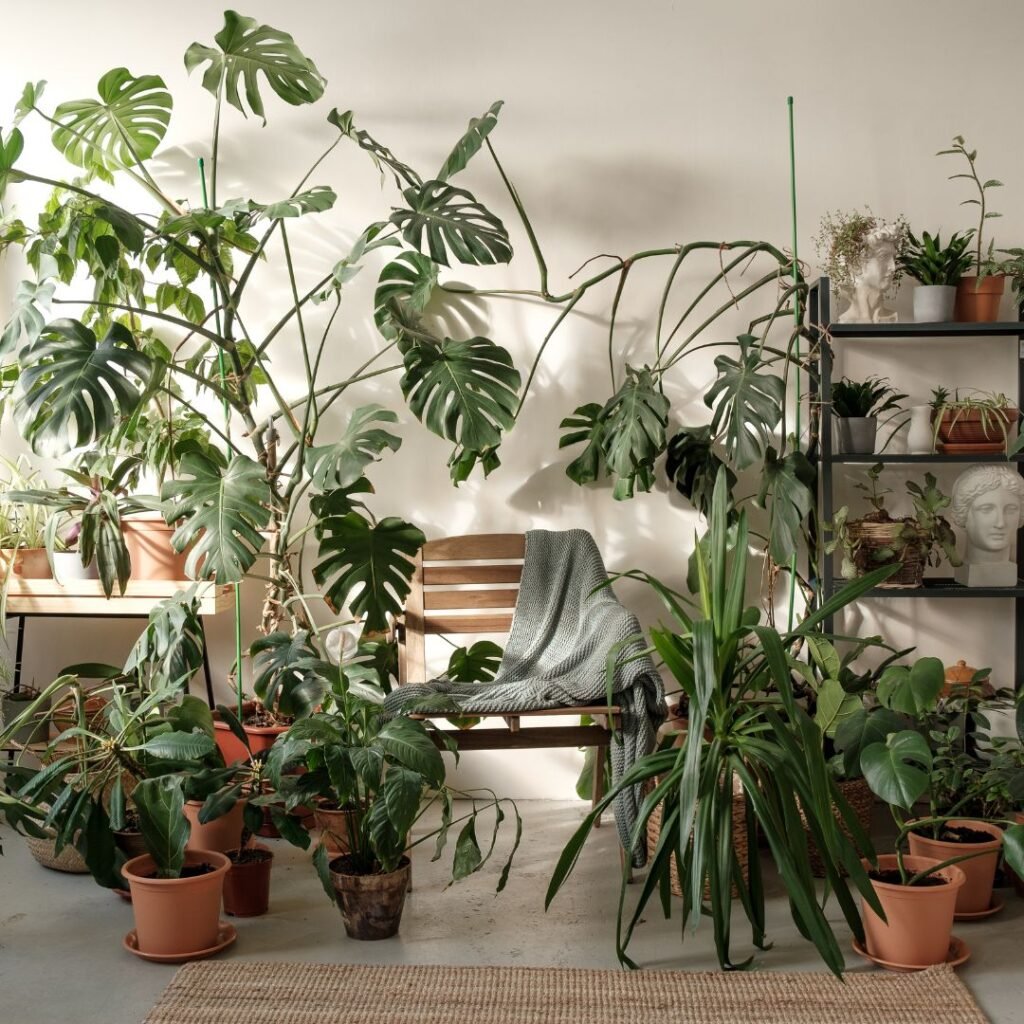
When I bunch my plants close together, they help each other hold onto moisture in the air. That makes things less stressful for them while I’m away.
A shady corner or spot near a north-facing window is perfect. It keeps them from overheating or drying out.
I leave enough space between pots for air to move. If plants are too crowded, they can get moldy or attract pests.
If I have trailing or hanging plants, I’ll put them on a low table so everything’s at the same level. That makes it easier to check them all at once before I leave.
Grouping my plants really does make watering and prep quicker. It’s a simple step, but it helps my houseplants stay happy till I get home.
6) Prune dead or yellowing leaves before leaving
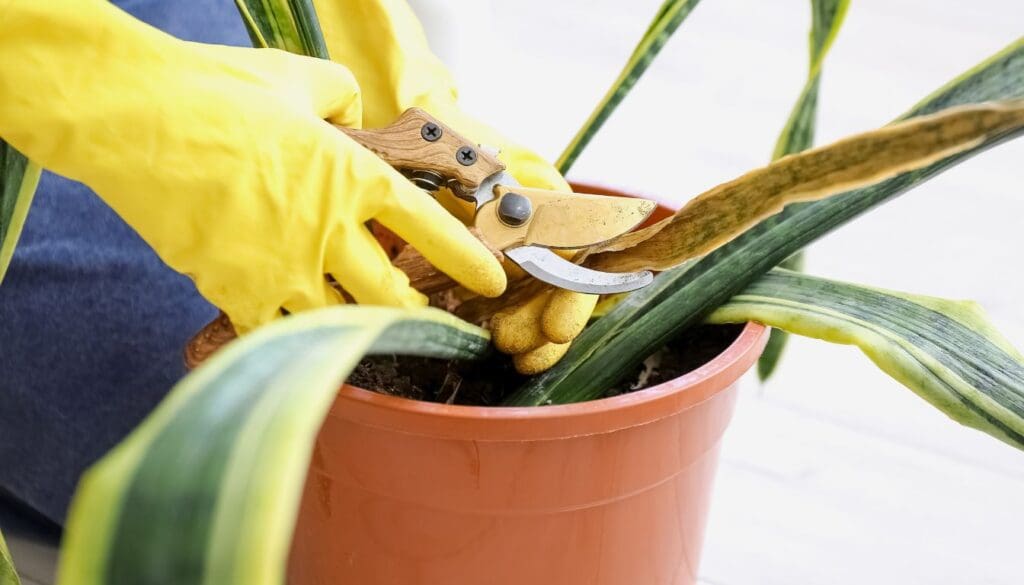
Before I pack up, I always remove any dead or yellowing leaves. Those leaves can attract pests or diseases, especially if I’m gone for more than a couple days.
Cutting away the unhealthy stuff helps my plants focus their energy on growing strong leaves and roots. I use sharp, clean scissors so I don’t accidentally damage the good parts.
If I spot any dried stems or brown tips, I snip those off too. I check the tops and undersides—sometimes there’s trouble hiding underneath.
Pruning is quick but makes a big difference. Plants look neater, and there are fewer spots for bugs to hide.
I toss the cut leaves in the trash or compost, not just in the pot. My goal is to leave my plants in great shape before I head out.
7) Apply a slow-release fertilizer
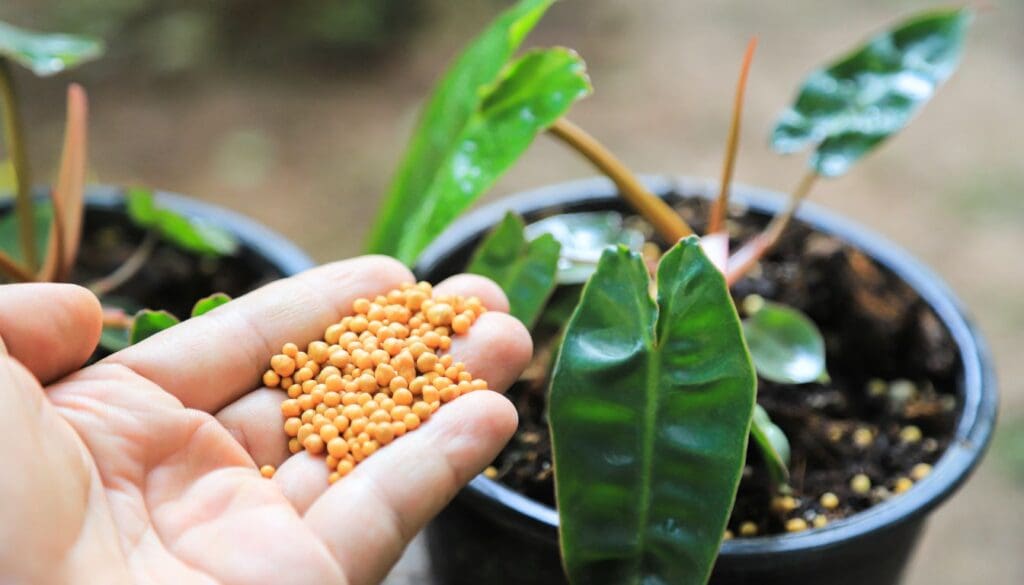
Before a trip, I always use a slow-release fertilizer. It gives my plants a steady supply of nutrients while I’m gone.
These fertilizers come as pellets or spikes. I pick whichever works for the plant, and I follow the instructions so I don’t overdo it.
It’s pretty simple—I press the fertilizer into the soil, give the plant some water, and that’s it. No fancy tools needed.
The fertilizer dissolves over time, so my plants don’t run out of nutrients. If I forget, my plants sometimes look a little sad when I get back, so now it’s always on my travel prep checklist.
By using a slow-release option, I feel like my plants will stay healthy for weeks. Honestly, it’s such an easy win.
8) Place plants in a cooler room to slow growth

I always move my plants to a cooler room before I leave. Cooler temps slow down their growth, so they don’t need as much water while I’m gone.
Cooler rooms help keep the soil from drying out too fast. It gives my plants a better shot at staying healthy if I can’t water them.
I look for a spot that’s out of direct sun, like a guest room or hallway. My tropicals still need some warmth, so I make sure it’s not too chilly.
Most houseplants handle a small drop in temperature just fine. A cooler spot helps prevent wilting and stress.
I check that the area isn’t drafty or near an air conditioner—cold blasts aren’t good. Moving plants to a cooler room is such a simple step, but it helps me worry less while I’m away.
9) Set up a drip irrigation system
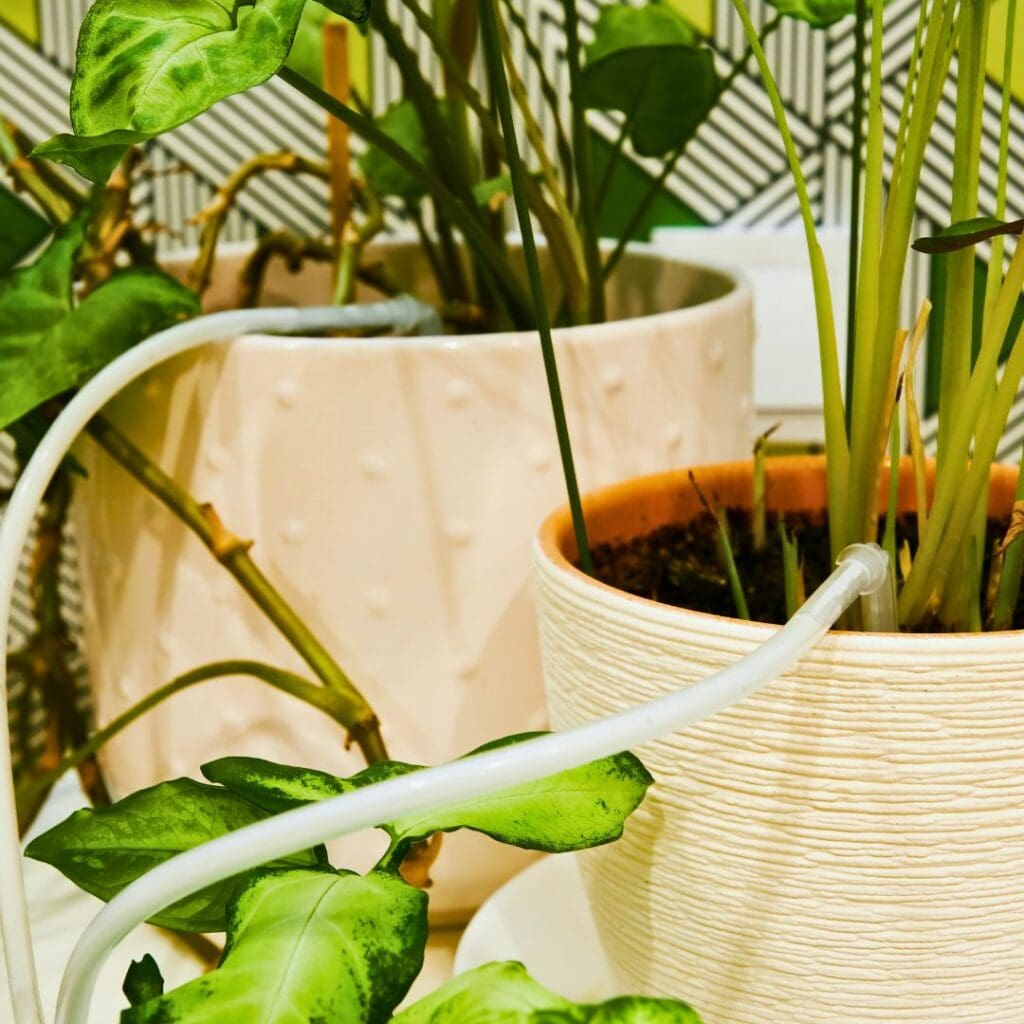
When I’m traveling, I want to make sure my plants still get water. A drip irrigation system is a great way to do that.
I use small tubes or hoses to send water straight to the soil. It goes right to the roots, where it’s needed most.
There are plenty of drip kits at garden stores or online. I pick one that fits the number of plants I have, and some even come with timers so I can set how often they get watered.
Setting it up is pretty straightforward—I lay out the tubes, hook them to a faucet, and place the ends near each plant. If needed, I tweak the flow so each one gets just enough water.
A timer is a lifesaver. I know my plants are getting watered, even if I’m gone for days.
This setup works for indoor and outdoor plants. I especially like it for patio pots or garden beds.
Drip irrigation helps prevent soil dry-out and keeps my plants looking good. It’s one of those tricks I always use before heading out.
10) Ask a neighbor or friend to check on your plants
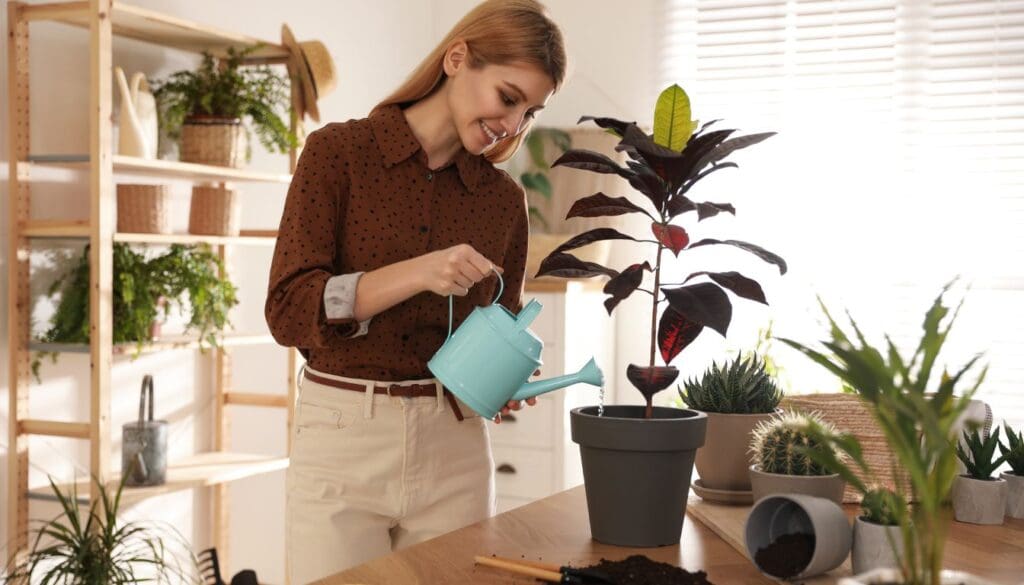
Whenever I’m heading out of town, I usually ask a neighbor or a friend to check in on my plants. There’s just something comforting about knowing someone I trust is popping by, even if it’s only once or twice.
I try to pick someone who actually enjoys plants or gardening, though honestly, most friends are willing to help for a week or so. I keep my instructions pretty simple—just a quick note about what each plant needs, and I’ll point out which ones are a bit fussier about water.
I also make sure they know where to find the watering can or spray bottle. If I have any special fertilizers or little tools, I leave them somewhere obvious.
It’s important to mention which plants are sensitive, so I’ll point those out. Before I leave, I always double-check if they have any questions.
I leave my phone number, just in case they’re not sure about something. Sometimes I’ll send them a link or two with plant care tips, just to make it easier.
When I get back, I like to thank them with a little gift or treat—maybe a note, some flowers, or cookies. It’s a small gesture, but it really shows I appreciate their help.
Understanding Your Plants’ Needs
Every plant’s a little different, so I do my best to figure out what each one prefers. That way, I can plan their care before I leave.
Different Plant Types and Their Requirements
Some plants, like succulents and cacti, barely need any water but love bright light. Others—ferns and peace lilies, for example—prefer shade and like their soil to stay moist.
I always try to check if a plant likes to dry out between waterings or if it wants to stay a bit damp. Here’s a quick table I use to keep it straight:
| Plant Type | Water Needs | Light Needs |
|---|---|---|
| Succulents/Cacti | Low | Bright, direct |
| Ferns | High | Shade |
| Snake Plants | Low/Moderate | Indirect |
| Peace Lilies | Moderate | Indirect |
Knowing what keeps my plants happy makes it way easier to set up a care plan.
Recognizing Stress Signs in Plants
Wilting leaves, yellow spots, and dry soil usually mean something’s off. Drooping leaves? Probably thirsty. Yellow or brown tips often point to overwatering or dry air.
I look for leaf color changes or drooping before I leave. If a plant looks unhappy, I’ll adjust the water, maybe move it out of direct sun, or trim off any dead bits.
Spotting these things early helps me make sure my plants are in good shape before I go. That way, they’re more likely to survive until I’m back.
Optimizing Your Home Environment
I want my plants to stay healthy while I’m gone, so I pay extra attention to their indoor climate and lighting. Getting their environment right can really help avoid problems like wilting or yellow leaves.
Regulating Indoor Climate for Plant Health
Keeping the temperature and humidity steady is pretty important. I try to keep my plant rooms between 65-75°F (18-24°C).
I avoid putting plants right next to heaters, AC units, or drafty windows. For airflow, I’ll sometimes leave a small fan on low—just enough to keep things fresh and prevent mold.
To help with humidity, I group my plants together or put a shallow tray of water nearby. It’s a simple trick, but it works.
Before I leave, I close the blinds or curtains during the hottest part of the day. That helps prevent any wild temperature swings.
Lighting Adjustments During Absence
Light’s a big deal, but I don’t overthink it. I’ll move my plants a little farther from bright windows so they don’t get scorched while I’m away.
For low-light plants, I make sure they’re still close enough to a window. If I use grow lights, I set them on an automatic timer—usually 12-14 hours on, then 10-12 hours off.
Leaving lights on all the time isn’t great, so I double-check the timer. Sheer curtains are perfect for letting in light without frying the leaves.
Frequently Asked Questions
I try to plan ahead so my plants stay happy while I’m traveling. A few simple tricks help me water, protect, and care for them, so I can return to healthy, thriving greenery.
What are some tips for watering my plants when I’m away on a month-long vacation?
I use self-watering spikes or wicks to keep the soil moist. Before leaving, I give each plant a deep drink and group them together to boost humidity.
How can I ensure my plants don’t dry out when I’m on a two-week holiday?
I move them away from harsh sunlight and set up humidity trays with pebbles and water. If I’ll be gone longer, I sometimes add water-retaining crystals to the soil.
Can placing plants in a bathtub help keep them hydrated while I’m gone?
Yep, I’ll put my plants in the bathtub with a shallow layer of water, making sure the pots have drainage holes. It works for a short trip, but I wouldn’t use this trick for too long—roots can get fussy.
What should I do with my indoor plants during a prolonged absence?
I group my plants together in a spot with indirect sunlight to avoid leaf burn. I steer clear of heaters or AC vents, and I’ll use self-watering devices for extra peace of mind.
Are there any garden watering solutions I can use while I’m on vacation?
For my outdoor garden, I’ll set up a drip system or soaker hoses on a timer. Potted plants get self-watering spikes filled with water. I always check everything the day before I leave to catch any leaks or surprises.
How can I maintain the health of my seedlings if I need to travel?
I usually cover my seedlings with a clear plastic dome or even just plastic wrap—anything that keeps the humidity in without pressing right onto the leaves.
Their soil? I try to keep it moist, not drenched, and always double-check that it’s not drying out. If you’re curious, here’s a link about overwatering.
Filtered light is best, so I tuck them somewhere they won’t get scorched. I really try to avoid letting things get too hot or bone-dry while I’m away.
Recommended Garden Supplies
| Product Image | Our Recommended Gardening Supplies | Check Offers! |
|---|---|---|
Top Top
Top
Top
Top
Top
Top
Top
Top | rePotme Houseplant and Tropical Classic Potting Soil Mix | Check Offer On Amazon |
 Top
Top
Top
Top
Top
Top
Top
Top | Espoma Organic Indoor Plant Food | Check Offer On Amazon |
 Top
Top
Top
Top
Top
Top
Top
Top | GooingTop LED Grow Light 6000K Full Spectrum Clip Plant Growing Lamp | Check Offer On Amazon |
 Top
Top
Top
Top
Top
Top
Top
Top | Soil Moisture Meter | Check Offer On Amazon |
 Top
Top
Top
Top
Top
Top
Top
Top | Govee Hygrometer Thermometer, Bluetooth Enabled! | Check Offer On Amazon |
 Top
Top | LEVOIT Humidifiers for Large Room(Best For Plants) | Check Offer On Amazon |
 Top
Top
Top
Top
Top
Top
Top
Top | Upgraded DIY Automatic Drip Irrigation Kit, 15 Potted Houseplants Support | Check Offer On Amazon |
 Top
Top
Top
Top
Top
Top
Top
Top | Stainless Steel Heavy Duty Gardening Tool Set | Check Offer On Amazon |
 Top
Top
Top
Top
Top
Top
Top
Top | Bonide Insecticidal Soap | Check Offer On Amazon |
 Top
Top
Top
Top
Top
Top
Top
Top | Bonide 32 oz Spray Neem Oil for Organic Gardening | Check Offer On Amazon |
 Top
Top
Top
Top
Top
Top
Top
Top | Garden Safe Fungicide | Check Offer On Amazon |

